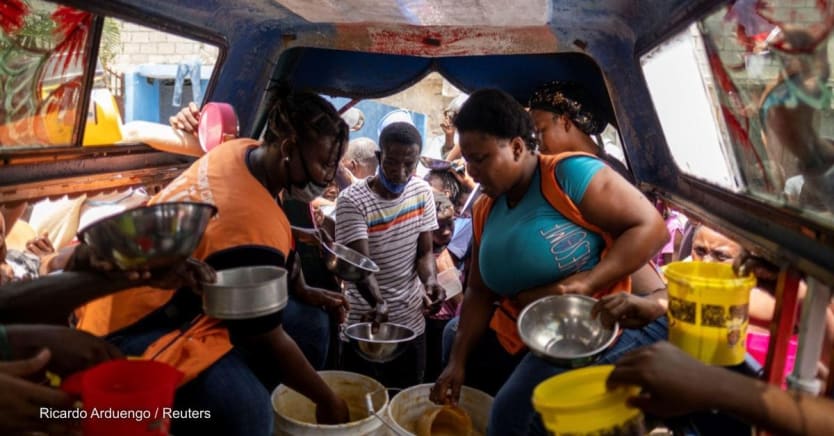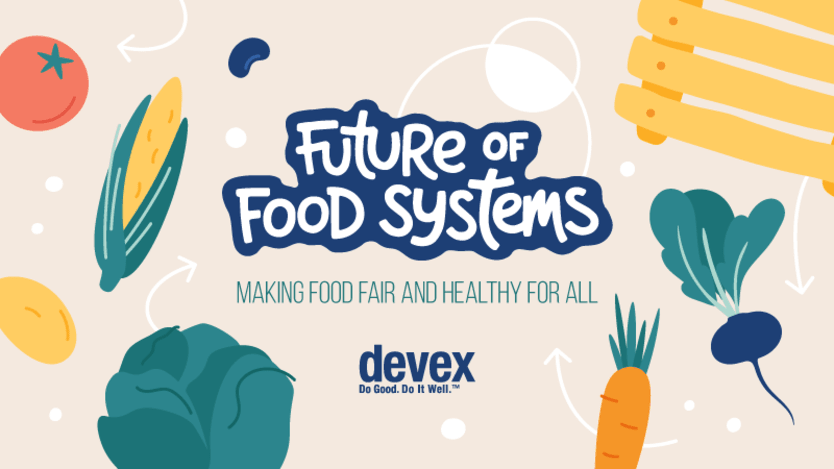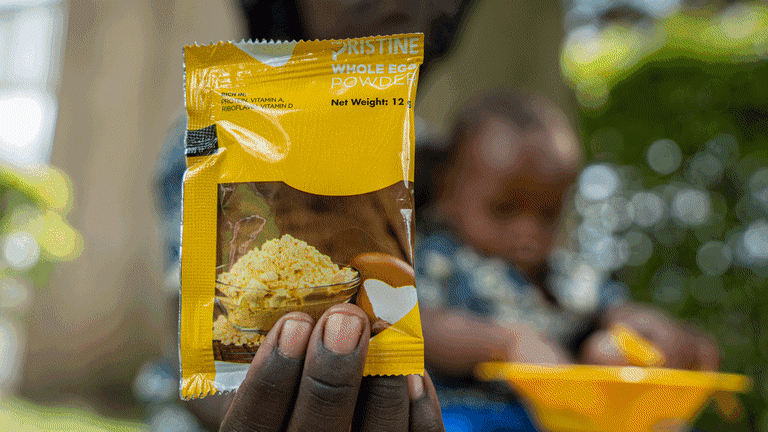
Following last month’s assassination of Haitian President Jovenel Moise, NGOs are readying themselves to respond to a worsening malnutrition crisis that has already been exacerbated by political and economic instability forcing a growing number of people to flee their homes over the past several months.
The immediate aftermath of the killing halted the activities of many NGOs providing vital services as Haiti declared a state of emergency. Those interruptions prevented them from providing malnutrition treatment and other food security activities, and NGOs are bracing for more severe disruptions over the coming weeks and months.
Part of our The Future of Food Systems series
Find out how we can make food fair and healthy for all. Join the conversation using the hashtag #FoodSystems and visit our The Future of Food Systems page for more coverage.
Fiammetta Cappellini, Haiti country representative at AVSI Foundation, said her NGO was granted permission to resume humanitarian activities after three days, but development programming remained paused for two weeks.
“We are warning about what could happen because we are waiting for the worst,” Cappellini said. “We are experiencing also a lack of capacity to be operational in the field … because it is really very dangerous in this moment.”
Even before Moise’s assassination, the deteriorating situation made it extremely difficult for Haitians to access enough nutritious food. The country ranks 170 of 189 countries on the United Nations Development Programme’s human development index and has the lowest income in Latin America and the Caribbean.
Haiti’s gross domestic product per capita is about $1,150, with the economy contracting 3.8% in 2020 as COVID-19 further hindered growth that was already challenged by the political situation, and its inflation rate was 22.8% in 2020. This has negatively impacted both domestic agriculture activities and the price of food imports. An estimated 4.4 million people, or roughly 40% of the population, are experiencing food insecurity.
“The country is passing through a huge economic crisis that has lasted three years. So now the agriculture is unable to produce enough to feed all the population, and because local money is not strong, all imported food [has] very high prices,” Cappellini said, noting that food security indicators have steadily worsened over that period.
She said young children up to 24 months of age have the worst levels of malnutrition, as families struggle to provide enough food. It remains too expensive to purchase, and agricultural activity does not produce enough to feed everyone. The compounding effects of natural disasters and climate change have also reduced production from previous agricultural seasons, leaving little space for farmers to have a poor harvest.
“We are warning about what could happen because we are waiting for the worst.”
— Fiammetta Cappellini, Haiti country representative, AVSI FoundationAVSI is partnering with other organizations, including UNICEF, to provide clinical treatment of malnutrition. Anne Marie Dembele, a nutrition specialist for UNICEF in Haiti, said the country’s turmoil has led families to reduce both the quality and quantity of food they are consuming, meaning children have even more difficulty accessing appropriate diets.
According to UNICEF, increased gang activities in urban areas, plus additional unrest following the presidential assassination, have forced families to leave their homes to survive, with an estimated 19,000 people displaced as a result by the end of July. This situation has made it even more difficult for some of the estimated 217,000 Haitian children suffering from severe and moderate acute malnutrition to receive proper treatment.
UNICEF has focused its work on children under 5 in camps for displaced people, working with local NGOs to screen for symptoms of malnutrition. The agency has also emphasized breastfeeding — particularly for mothers with children over the age of 6 months, encouraging them to continue the practice even after babies start consuming complementary solid foods.
“We also organized an integrated mobile team which encompasses health — infant, maternal — immunization, and nutrition,” Dembele said. “They were coordinated through the health center staff, and they were supported by the NGOs and community health volunteers. So they actually screen children and diagnose, immediately [referring them] to the nutrition team” for treatment.
Lessons from Haiti: How to build safer cities
Haiti's 2010 earthquake demonstrated just how vulnerable its cities are and why aid organizations can’t rely on standardized approaches.
A large challenge in Haiti is the transportation of both supplies and staffers to serve those who are in need of assistance but remain in their homes. Political protests routinely lead to barricaded roads for uncertain amounts of time, and gang violence can make it impossible to travel safely.
Transportation blockades also impact agriculture, because seeds and other inputs cannot reach farmers when they need supplies for planting.
“We have four [national administrative] departments which are not accessible by road using the national road,” Dembele said. “At the beginning we used the helicopter … which is coordinated by [the World Food Programme], so we managed to transport sufficient supply in terms of RUTFs — the ready-to-use therapeutic foods — and also milk F-75 [and] F-100 [therapeutic products] and medicine.”
Health centers where the population can receive malnutrition treatment are also often closed amid unrest. To create a sense of safety while traveling to those that do remain open, UNICEF is working to fund transportation for women and their children so they are not vulnerable to armed gangs.
But money for all these activities remains severely strained despite Haiti’s “nutrition crisis,” Dembele said.
“All of these intervention needs, they are expensive,” Dembele said. “We are really facing a big challenge through the availability of financial resources in order to conduct our interventions on the ground.”
Visit the Future of Food Systems series for more coverage on food and nutrition — and importantly, how we can make food fair and healthy for all. You can join the conversation using the hashtag #FoodSystems.









